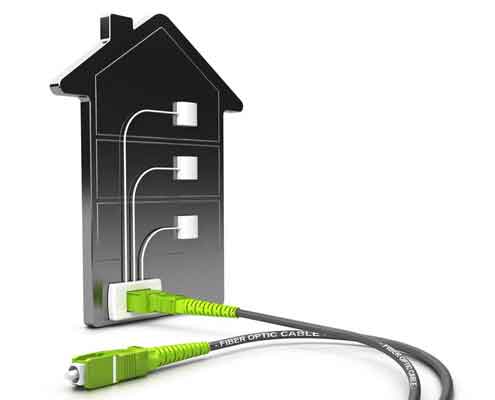PON Networks
A passive optical network (PON) has the power to deliver high-quality broadband network access, but it’s a form of networking which most people are unfamiliar with. However, the demand for faster and more efficient broadband continues to rise. Therefore, it’s important that you understand the world of PON networks and the benefits they can deliver.
What Are Passive Optical Networks?
Any internet service provider (ISP) worth their salt will want to provide the best access to the internet they can. After all, consumers want to be sure they’re getting an internet service which is both efficient and cost effective. One of the most recent breakthroughs in broadband technology has been the adoption of fiber optic cabling. The main benefits of fiber optic cabling are that it allows high transmission speeds over long distances along with enhanced security and less interference.
A PON enhances these by making it possible for this cabling to go direct from the ISP and either all the way or almost all the way to the end user. PON networks achieve this structure by employing fibre optic splitters and combiners. These two components are used to divide fiber bandwith between various points along the fiber network. This allows the broadband signal to be transferred effortlessly between the optical line terminal at the ISP’s hub direct to the optical network terminals near its customers.
Types of Passive Optical Networks
PONs are flexible network solutions and, as such, there are a wide variety of options available:
- Broadband PON (BPON): capable of delivering 622 Mbps downstream and speeds of 155 Mbps upstream, BPON replaced the less efficient asynchronous transfer mode (ATM) PON. However, issue such as limited bandwidth mean that BPON is being gradually phased out.
- Ethernet PON (EPON): whereas BPON still uses ATM cells to carry signals, EPON takes advantage of ethernet packets. Using a Layer 2 network, EPON transfers data by using Internet Protocol. This allows EPON to carry data, video and voice over 1 Gbit/s bandwidths.
- Gigabit Ethernet PON (GPON): GPON uses multiple Layer 2 networks, as opposed to EPON’s singular approach, to carry data, video and voice. Using a mixture of ATM and ethernet technology, GPON can reach up to 2.5 Gbit/s bandwidths both upstream and downstream.
Benefits of Passive Optical Networks?
Choosing to integrate a PON into your IT infrastructure will bring you numerous benefits such as:
- Lower Costs: the beauty of PONs is that their technology is capable of using a single-optical fiber to deliver its service to multiple customers. This shared approach to bandwidth reduces network infrastructure costs and allows PON providers to offer their service at lower costs.
- High Speeds: with speeds available of up to 2.5Gbit/s, PONs deliver unrivalled speeds and ensure that users are able to use this to their advantage e.g. remaining competitive and enhancing their productivity.
- Multiple Services on One Line: a PON is capable of supplying all your voice, video and data services on a single fiber optic line. This provides a pleasing level of simplicity to the system as it reduces the need for multiple communication lines.
- Reliable: fiber optic lines are created from light, flexible materials and this ensures that they are easy to install and maintain. This ease of access helps to strengthen their reliability, but where they really shine is with their mode of data transmission. As fiber optic lines transmit light signals, they are not affected by electro-magnetic signals – a situation which leads to less interference on the PON lines.
For additional electrical articles please visit our main BLOG page here





